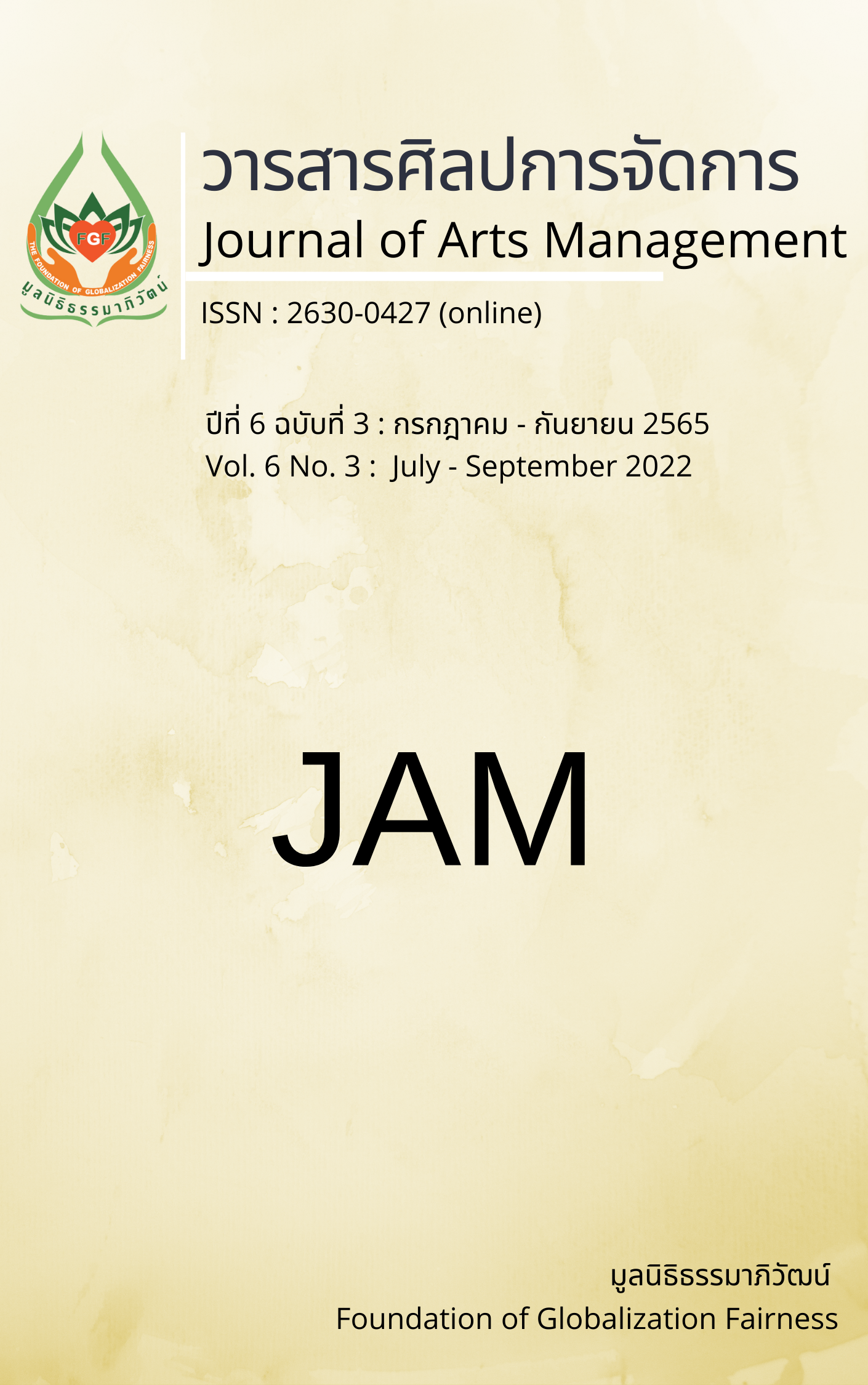Causal Factors Affecting Use Behavior of Human Resources Management System Among Staff Using My RTARF Application of Royal Thai Armed Forces Headquarters’s Staff
Main Article Content
Abstract
The objectives of this research article were to 1) validate the consistency of the causal factors affecting the use behavior of the human resources management system among staff using My RTARF application and 2) search for the causal factors affecting the use behavior of the human resources management system among staff using My RTARF application. The tools used in the research were online questionnaires. The sample group consisted of 327 people who had behavior related to the use of the human resources management system among staff using the My RTARF application of Royal Thai Armed Forces Headquarters’ staff. The statistics used in data analysis were the frequency, percentage, and structural equation model.
The results of the research showed that the causal relationship model of variables consists of four components: 1) perceived ease of use, 2) perceived usefulness, 3) attitude, 4) use behavior, and a model developed by empirical data. The statistics showed the Chi-square statistics goodness fit test (χ²) = 243.65, degrees of freedom (df) = 144, CMIN/df = 1.69, GFI = 0.93, AGFI = 0.90, SRMR = 0.04, RMSEA = 0.05. The result was a predictive coefficient of 0.74, indicating that the variables in the model can explain the behavior to use. The human resources management system among staff using the My RTARF application by Royal Thai Armed Forces Headquarters’ staff 74 percent, and attitude influences behavior to use. Human resources management system among staff use the My RTARF application by Royal Thai Armed Forces Headquarters’ staff.
Article Details

This work is licensed under a Creative Commons Attribution-NonCommercial-NoDerivatives 4.0 International License.
Views and opinions appearing in articles in the Journal of Arts of Management It is the responsibility of the author of the article. and does not constitute the view and responsibility of the editorial team I agree that the article is copyright of the Arts and Management Journal.
References
Boonyoo, S. et al. (2022). Influence of technology acceptance and trust on the intention in using QR code payment system of consumers in Bangkok. Journal of Liberal Arts and Service Industry, 5(1), 45-56.
Cerretani, P. I., Iturrioz, E. B., & Garay, P. B. (2016). Use of information and communications technology, academic performance and psychosocial distress in university students. Computers in Human Behavior, 56, 119-126. https://doi.org/10.1016/j.chb.2015.11.026
Charoenphon, w. et al. (2020). Attitude and behavior of using BAAC A-MOBILE application of Bank for Agriculture and Agricultural Cooperatives’ Customers. Journal of Kanchanaburi Rajabhat University, 10(1), 8-13.
Jaichuen, S., & Sartmoon, S. (2021). Consumer behavior in accepting electronic health technologies health care air purifier. Rajapark Journal, 14(32), 160-172.
Jantakoon, T., & Nilsook, P. (2018). Acceptance usage of a mobile service in higher education. Journal of Thonburi University, 12(28), 358-366.
Pankham, S., & Lachonnabot, S. (2021). Causal relationship model of used cameras purchase intention on Facebook Page Konkaiklong-CameraTown of consumers in Bangkok and its Vicinity. Journal of Multidisciplinary in Humanities and Social Sciences, 4(2), 490–505.
Park, C.L. (2010). Making sense of the meaning literature: An integrative review of meaning making and its effects on adjustment to stressful life events. Psychological Bulletin, 136(2), 257–301. https://doi.org/10.1037/a0018301
Paul, J. H., Patrick, Y. K., Chau, O. R., Sheng, L., & Tam, K. Y. (1999). Examining the technology acceptance model using physician. Journal of Management Information Systems, 16(2), 91-112. https://doi.org/10.1080/07421222.1999.11518247
Payakkapong, A. (2017). Technology acceptance model (TAM) for marketing competitive. Journal of Thonburi University, 11(25), 128-136.
Pollawan, T., Kulkaew, S., & Gerdsri, N. (2014). Behavior of QR code technology of Bangkok population. Kasetsart Engineering Journal, 88(27), 29-40.
Poolma, P., & Rassameethes, B. (2021). Factors affecting intention to use electric vehicles of consumers in Bangkok. Journal of the Association of Researchers, 26(4), 86-87.
Rangsungnoen, G. (2011). Factor analysis by SPSS and AMOS for research. SE-EDUCATION.
Rodthong, S., (2013). Behavior intention in downloading mobile application among smartphones users. Rajamangala University of Technology Thanyaburi.
Simakhajornboon, P., & Silpapinun, S. (2018). Factors affecting the intention to pay for goods or services through the true money wallet application. Veridian E-Journal, Silpakorn University, 11(3), 3104-3120.
Sirilamduan, C., Chuaychuny, S., Ruamboon, K., & Srisuk, S. (2021). A development web application for planning cultivate vegetable to maximize profits on Nam Kam District, That Phanom, Nakhon Phanom Province, Thailand. International Journal of Multidisciplinary in Management and Tourism, 5(1), 19–28. https://doi.org/10.14456/ijmmt.2021.3
Solomon, M. R. (2017). Consumer behavior buying, having, and being (12th ed.). Pearson Education.
Theerasopee, N., & Ottamakorn, C. (2019). Influence factors in the behavioral intention of the use of the web portal Thai MOOC educational system. Silpakorn University Journal, 39(5), 113-114.
Vongsumedh, P. et al. (2017). The integrated model of web-based learning system adoption of computer and IT instructors in Thai Universities. Princess of Naradhiwas University Journal, 9(2), 122-138.
Wiratchai, N. (1999). LISREL model: Statistical analysis for research (3rd ed.). Chulalongkorn University Printing House.
Yeamhongpapha, W., & Phra Suthirattanapundit. (2019). The social communication for the learning process development of Buddhist organization. Mahachula Academic Journal, 6(sp),181-200.
Yukitphuti, W., & Teerawanviwat, D. (2016). Behavior of line using and factors affecting the engagement of LINE customers in Bangkok. KKU International Journal of Humanities and Social Sciences, 6(3), 71-95.
Yuwakosol, S., & Pachsiry, C. (2021). Opinion and media usage among generations in the digital age. The Journal of Social
Communication Innovation, 9(2), 10-25.


